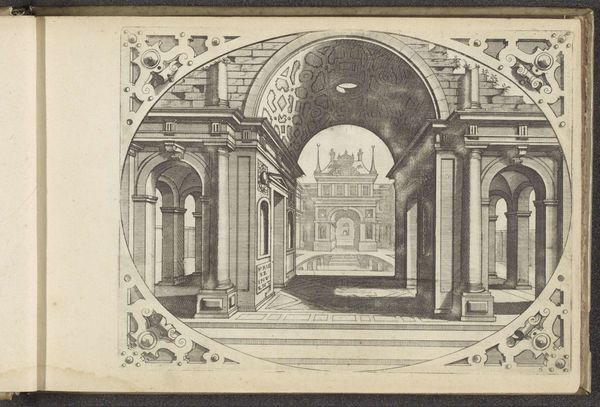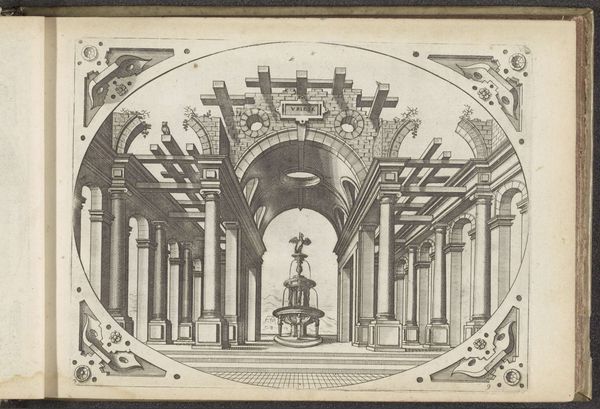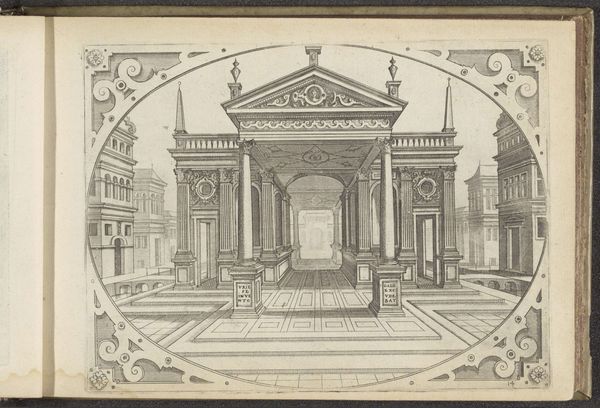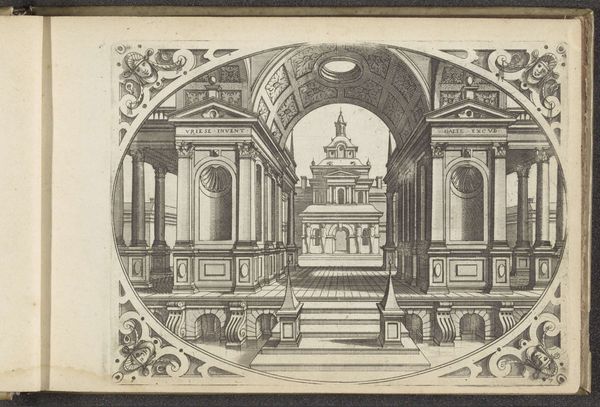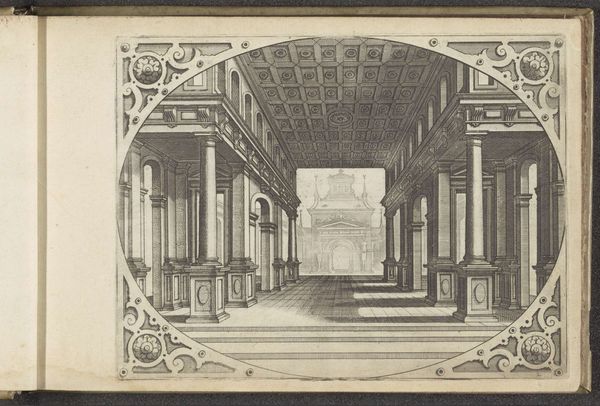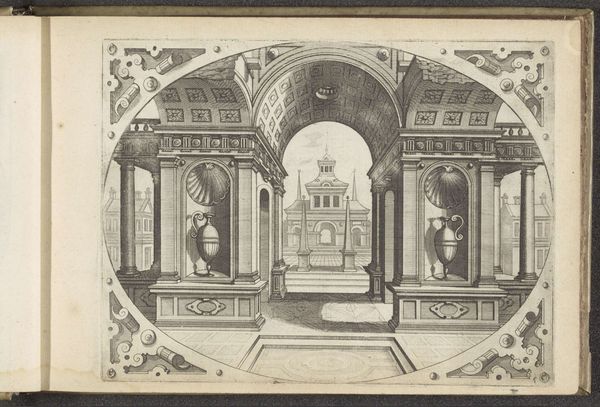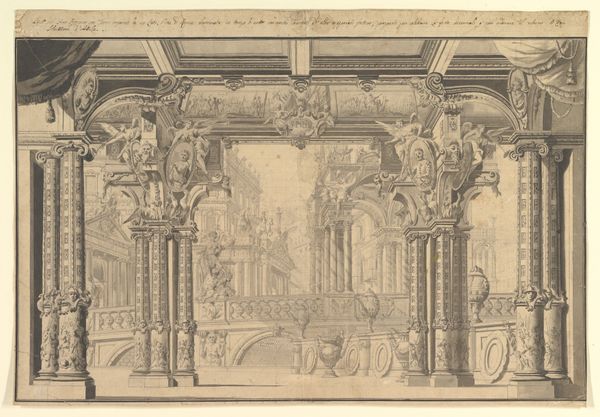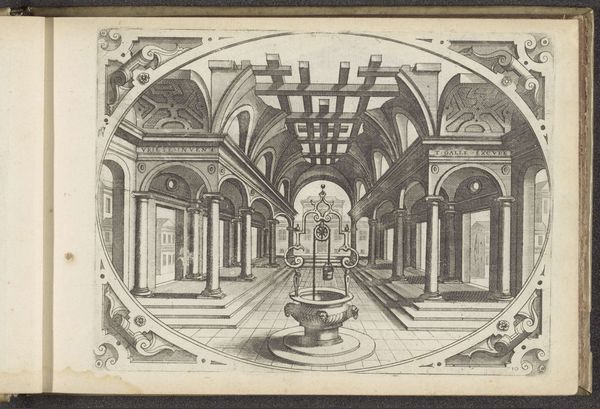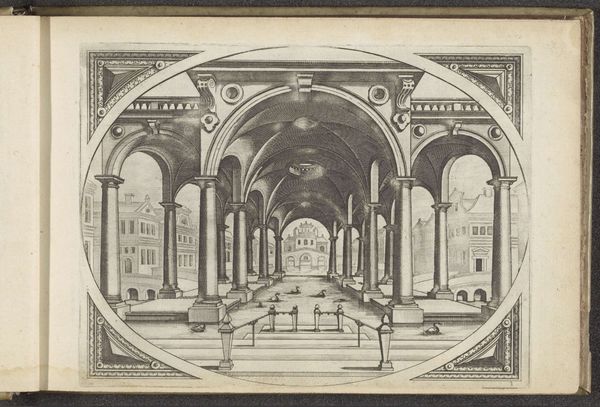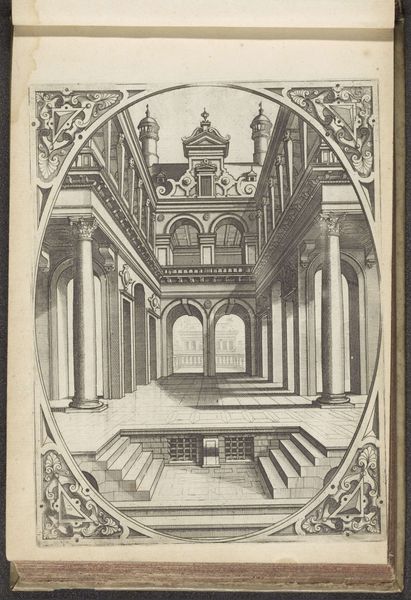
Geruïneerde poort ondersteund door Ionische zuilen 1560 - 1601
0:00
0:00
johannesoflucasvandoetechum
Rijksmuseum
drawing, paper, engraving, architecture
#
drawing
#
perspective
#
paper
#
form
#
11_renaissance
#
coloured pencil
#
engraving
#
architecture
Dimensions: height 164 mm, width 215 mm
Copyright: Rijks Museum: Open Domain
This print was made by Johannes or Lucas van Doetechum, using an engraving process. Engraving is an intaglio printmaking technique, meaning that the image is incised into a plate, traditionally made of copper. The engraver uses a tool called a burin to cut lines into the surface, creating grooves that hold ink. The deeper the cut, the more ink it holds, and the darker the line appears in the final print. The plate is then inked, and the surface wiped clean, leaving ink only in the engraved lines. Damp paper is placed on the plate, and both are run through a high-pressure printing press. The resulting image has a distinctive, sharp quality, because of the precision of the engraved lines. The technique demands a high level of skill and control, and was often used for detailed, reproducible imagery, such as architectural renderings like this one. Consider the amount of labor involved in creating this kind of image. Each line is a deliberate act, requiring careful planning and execution. Recognizing the artistry and labor embedded in printmaking techniques like engraving allows us to appreciate these works not just as images, but as testaments to human skill.
Comments
No comments
Be the first to comment and join the conversation on the ultimate creative platform.
